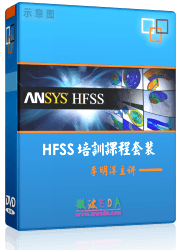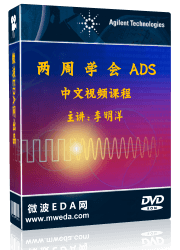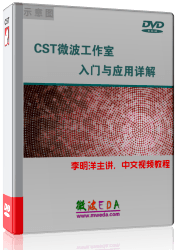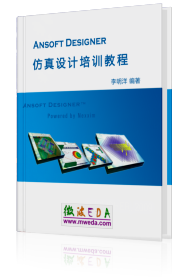Material Parameters: default - Conductivity
Materials New/Edit New/Edit New Material New Material Conductivity Conductivity
Edit Object Properties  (:
Materials:material1 (:
Materials:material1 Properties Properties Conductivity) Conductivity)
This is a dialog page of the Material
Parameters dialog box. It is only visible for "Default"
and "High Frequency" material sets.
On this dialog page, the electric and magnetic conductivity characteristic
of the current material may be specified. This is possible by defining
either the conductivity value or the tangent delta value of the material.
For dielectric losses, special tangent delta models are offered to enable
a realistic material modeling. All input parameters are also available
for an anisotropic material type.
Note that it is not possible to define a conductivity or tangent delta
value for a previously defined dispersive material.
The introduction of losses leads to complex material parameters possessing
both a real and an imaginary part. For all possible loss definitions on
this page, the real part is always determined by the permittivity or the
permeability value, respectively, on the Material
Parameter - General page. If the real part of the complex material
model is frequency dependent, the defined value is only correct for one
frequency point, namely the specified tangent delta frequency (constant
fit) or the solver center frequency (dispersion fit).
Note: Defining
parameters for constant electric/magnetic conductivity value then they
can be used with sensitivity analysis (see Sensitivity
Analysis for more information).
Electric conductivity frame
Electric conductivity:
Activating this radio button defines a conducting material based on the
model of a constant electric conductivity value.
Nonlinear:
This checkbox enables setting of the nonlinear electric conductivity.
Button Properties... opens the
Nonlinear Electric
Conductivity dialog, where the E(J)-curve can be defined.
Tangent delta
electric: Activating this radio button offers the possibility to
define different loss models based on electric tangent delta values.
Specification:
Three different electric tangent delta specifications are available:
Const. Conductivity:
This model corresponds to a material possessing a constant conductivity
as mentioned above, but is defined by the input of an electric tangent
delta value given at a specific frequency.
Const. fit
tan delta: This specification is based on
a pole-zero dispersion model, defined again by the input of an electric
tangent delta value given at the defined frequency and by the model order.
The first order corresponds to a Debye dispersion whereas higher order
models are specifically developed to fit a broadband constant imaginary
part of the permittivity. They are particularly suitable for low losses
(low tangent delta value) materials. As mentioned above, at this frequency
point the real part of the permittivity equals the epsilon input on the
Material Parameter
- General page. Please note that a perfectly constant tangent delta
does not exist in reality; however, the broadband behavior of this formulation
represents an almost constant tangent delta curve.
Dispersion
fit tan delta: The dispersion fit is based
either on a constant conductivity or a General 1st order model. Now more
than one tangent delta value may be defined for different frequency points
by pressing the Dispersion List鈥?button. To each frequency point a weight
is assigned in order to direct the interpolation algorithm and to enforce
the result quality. Again, the real part of the permittivity is given
by the epsilon input on the Material
Parameter - General page. Please note that due to the frequency dependent
material behavior the values correspond only at the center frequency.
Magnetic conductivity frame
Magnetic conductivity:
Activating this radio button defines a conducting material based on the
model of a constant magnetic conductivity value.
Tangent delta
magnetic: Activating this radio button enables the input of a magnetic
tangent delta value given at specific frequency.
Specification:
Three different magnetic tangent delta specifications are available:
Const. Conductivity:
This model corresponds to a material possessing a constant conductivity
as mentioned above, but is defined by the input of a magnetic tangent
delta value given at a specific frequency.
Const. fit
tan delta: This specification is based on a pole-zero dispersion
model, defined again by the input of a magnetic tangent delta value given
at the defined frequency and by the model order. The first order corresponds
to a Debye dispersion whereas higher order models are specifically developed
to fit a broadband constant imaginary part of the permeability. They are
particularly suitable for low losses (low tangent delta value) materials.
As mentioned above, at this frequency point the real part of the permeability
equals the mue input on the Material
Parameter - General page. Please note that a perfectly constant tangent
delta does not exist in reality, however, the broadband behavior of this
formulation represents an almost constant tangent delta curve.
Dispersion
fit tan delta: The dispersion fit is based either on a constant
conductivity or a general 1st order model. Now more than one tangent delta
value may be defined for different frequency points by pressing the Dispersion List鈥?/a> button.
To each frequency point a weight is assigned in order to direct the interpolation
algorithm and to enforce the result quality. Again the real part of the
permeability is given by the mue input on the Material
Parameter - General page. Please note that due to the frequency dependent
material behavior the values correspond only at the center frequency.
Frequency range frame
Fmin/Fmax:
These text fields are for information purposes only. They show you the
minimal and maximal chosen frequency. To change these values you may go
into the frequency range settings in the main menu
under Solver Frequency.... Frequency....
See also
Material
Parameters,
Change
Material, Modeler
View, Add
to Material Library




HFSS视频教程
ADS视频教程
CST视频教程
Ansoft Designer 中文教程
|